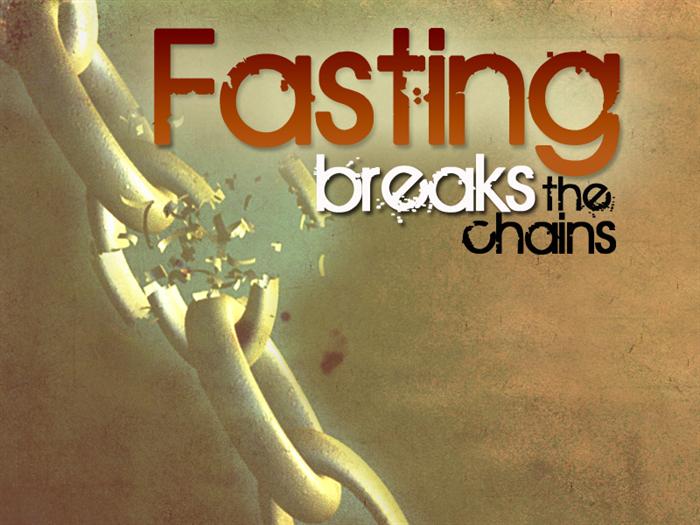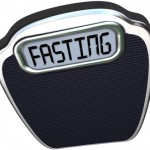Alternate Day fasting
 Alternate Day Fasting is a method restricting calorie intake for 24 hours, you can then eat (within reason) what you want for the next 24 hours. Following this diet regimen obviously helps dieters to lose weight, however there has been ongoing research that has revealed other potential benefits including improving longevity and reducing Insulin Growth Factor-1 (IGF-1). Trying to stick to a strict low calorie diet can be quite depressing and very very challenging, however the psychology of knowing that when you are on a Fasting day and know that tomorrow you can eat normally, is much more appealing. Personally I find this method of dieting much easier to stick to. If you have failed with other diets then you should give this a go! The diet can help speed up metabolism, lower blood pressure and improve conditions such as arthritis and asthma. There are also claims that Fasting every other day could shrink fat cells and boost some of the mechanisms that break down fat. All foods can be consumed while performing the Alternate Day Fasting Diet. While on the Fasting day, lower calorie foods should be favoured such as fresh salads and lean proteins. The diet does not focus on restricting food groups. Any type of food can be consumed on either the Fast or non-Fast day as long as you stay within the recommended calorie counts for these days. However, be sensible, you want to aim for nutritious food groups rather than living off Big-Macs!
Alternate Day Fasting is a method restricting calorie intake for 24 hours, you can then eat (within reason) what you want for the next 24 hours. Following this diet regimen obviously helps dieters to lose weight, however there has been ongoing research that has revealed other potential benefits including improving longevity and reducing Insulin Growth Factor-1 (IGF-1). Trying to stick to a strict low calorie diet can be quite depressing and very very challenging, however the psychology of knowing that when you are on a Fasting day and know that tomorrow you can eat normally, is much more appealing. Personally I find this method of dieting much easier to stick to. If you have failed with other diets then you should give this a go! The diet can help speed up metabolism, lower blood pressure and improve conditions such as arthritis and asthma. There are also claims that Fasting every other day could shrink fat cells and boost some of the mechanisms that break down fat. All foods can be consumed while performing the Alternate Day Fasting Diet. While on the Fasting day, lower calorie foods should be favoured such as fresh salads and lean proteins. The diet does not focus on restricting food groups. Any type of food can be consumed on either the Fast or non-Fast day as long as you stay within the recommended calorie counts for these days. However, be sensible, you want to aim for nutritious food groups rather than living off Big-Macs!
The Theory behind the Alternate Day Fasting Diet
On a non-Fast day dieters can eat between 1500 and 2000 calories and on the Fasting day, calorie intake must be limited to 300 to 500 calories. There have been clinical trials which have shown the diet can also help lower blood pressure and improve conditions such as arthritis and asthma. A number of studies have supported the diet plan. Nutritionists at the University of California discovered that eating half as much as usual every other day could shrink fat cells and boost some of the mechanisms that break down fat.
A recent studies have revealed that people who followed the Alternate Day Fasting Diet for three weeks lost an average of 2.5 per cent of their body weight and four per cent of their body fat. Despite the study results, many critics still say the feast-or-famine approach is dangerous because it encourages unhealthy eating patterns. Many studies have evaluated daily intermittent fasting, and the results are compellingly positive. Three major mechanisms by which fasting benefits your body, as it extends lifespan and protects against disease, include:
- Increased insulin sensitivity and mitochondrial energy efficiency Fasting increases insulin sensitivity along with mitochondrial energy efficiency, and thereby retards aging and disease, which are typically associated with loss of insulin sensitivity and declined mitochondrial energy.
-
Reduced oxidative stress Fasting decreases the accumulation of oxidative radicals in the cell, and thereby prevents oxidative damage to cellular proteins, lipids, and nucleic acids associated with aging and disease.
-
Increased capacity to resist stress, disease and aging
Fasting induces a cellular stress response (similar to that induced by exercise) in which cells up-regulate the expression of genes that increase the capacity to cope with stress and resist disease and aging.
One of the mechanisms that makes fasting so effective for weight loss is the fact that it provokes the secretion of human growth hormone (HGH), which is a fat-burning hormone. It also plays an important role in muscle building. Fasting also increases catecholamines, which increases resting energy expenditure, while decreasing insulin levels, which allows stored fat to be burned for fuel.
Together, these and other factors will turn you into an effective fat-burning machine. If your goal is to shed excess fat, fasting can be both effective and beneficial for improving many disease markers. The type of fast you choose appears to be less important, so pick whichever one fits your lifestyle, schedule, and temperament the best.
The Skinny Gene
This diet works by activating the SIRT1 gene, in other words ‘turning on the skinny switch’ during times of fasting. This gene speeds up the metabolism, which in turn aids weight loss.
The SIRT1 gene, or the “skinny gene”, is found in humans and other mammals. It helps promote survival by protecting cells during times when food is scarce. During the Alternate-Day Fasting Diet, when calorie intake is restricted, the “skinny gene” is turned on.
By restricting calories on Fast days, you will lose weight and activate SIRT1, this gene that has also been shown to prevent disease, improve metabolism, and extend lifespan.
Diet tips:
- Start with a non-Fast, where you eat as per normal.
- The following day is a Fast, where you restrict your food intake.
- Limit yourself to no more than 500 calories on a Fasting day.
- On non-Fast days you are free to eat as much as you would normally (but don’t overeat!) as well any of the food types that you like.
- On non-Fast, you should eat what you would normally eat. The key to this diet is that you enjoy your non-fast days in order to avoid the diet fatigue that can set in when following other weight-loss plans.
- Exercise regularly, particularly on non-Fast days.
- Don’t be a slave to weighing scales – only weigh yourself once per week, usually on the morning after a Fast day.
The Pros of Alternate day Fasting
The benefits of alternate day fasting are still being researched by many institutions, so are still yet to be definitively proven in human subjects. However, the benefits are thought to be as follows
- Weight loss
- Improved lifespan
- Improved bodily repair function
- Better survival rate after major disease or trauma
The Cons of Alternate day Fasting
There have been no medical downsides identified so far, however at the end of the day it is still a diet that overall restricts calorie intake – so some people may still struggle on the Fasting days. One of the possible cons of alternate day fasting is that, on non-Fasting days, you may end up over eating to make up for the hunger felt on fasting days. There are other diet regimes such as the 5:2 Diet which aims at calorie restrictions to approximately the same levels but Fasting days are only on 2 days out of 7 rather than every other day.
Should I Try the Alternate Day Fasting Diet
This has to be one of the cheapest and easiest ways to lose weight – so what have you got to lose except some of those excess kilo’s. Alternate day fasting has credible amounts of research to back it up, if you decide this fast working diet is for you and you have any health concerns, check with your doctor first.
